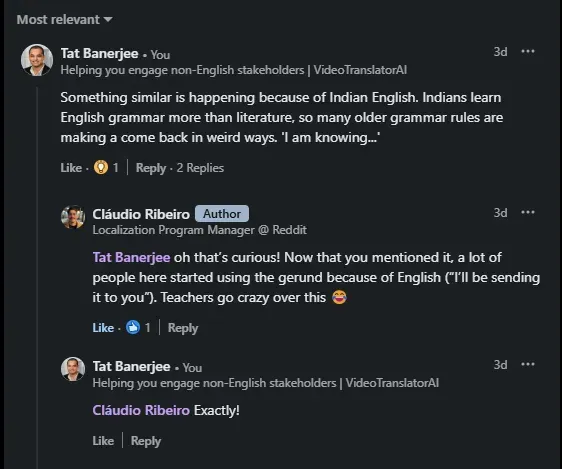A language expert I follow on LinkedIn had a very interesting take, which sparked an idea on my side.

Introduction
Loan words and borrowed linguistic structures often highlight how languages naturally influence one another.
From Cláudio Ribeiro note, we have the following examples, where Brazilian Portuguese is recovering, or rediscovering (?) Latin words through English.
An example of this is “deletar (to delete). That word was all but dead in Portuguese, but with the advent of the internet, it is now back in the common place and has been reintroduced to the dictionary. It comes from the Latin delēre.”
Another curious example Cláudio referenced was, “another word that has been revived … is mandatório (mandatory). We’ve always had obrigatório (obligatory); it looks nicer, it sounds nicer, it’s more universally understood. I really don’t understand how or why this one is coming back, lol.”
Another comment, from Garth Johnson, was “A few Spanish examples come to mind: chequear (to check) and chatear (to chat). Not sure if these qualify as Latin/archaic words that English has brought back, I would think it’s more due to technology (dominated in English) working its way into the lexicons of younger youth abroad.”
These examples got me thinking, and it reminded me of a talk by David Crystal. So off I went…

So this morning, I decided to look into it a bit more, and according to ChatGPT, this form of usage is not a ‘gerund’!
David Crystal - Will English Always Be the Global Language?
If you get a chance, please watch this video (from 2013!)
The long and short is in the case of Indian English, one notable usage is extending the continuous (or progressive) tense to verbs that are typically not used in the progressive aspect in other varieties of English. An example is “I am knowing this,” where standard British or American English might say, “I know this.”
Many South Asian languages—such as Hindi, Bengali, and others—use grammatical structures that differ from English when expressing ongoing actions, states, and habitual activities. The concept of a continuous or progressive form can encompass not only physical actions (“I am eating”) but also mental states or more abstract conditions (“I am understanding,” “I am knowing”).
Over time, speakers of these languages who also speak English naturally transfer this broader “continuous” usage into their English speech. This is a form of language transfer where structures from one language are superimposed onto another.
Gerund vs. Present Participle: A Quick Clarification
A common misconception is to call all -ing forms “gerunds.” While gerunds do end in -ing, they function as nouns in a sentence (e.g., “Swimming is fun,” where “swimming” is the subject).
In “I am knowing this,” the -ing form is actually a present participle, part of the progressive verb form “am knowing.” A present participle helps form continuous tenses—thus, calling it a “gerund” would be imprecise. Nevertheless, translators and interpreters frequently hear the term “gerund” used informally for any -ing form, so it’s helpful to clarify the difference.
Loan Words vs. Loan Constructions
When we talk about loan words, we’re typically referring to specific vocabulary items borrowed from one language into another (“bungalow” from Hindi into English, for instance). However, “loan constructions” or “loan translations” occur when syntactic or idiomatic usages cross language boundaries—like Indian English’s broader use of the continuous tense. Although not always described as “loan words” in the narrow sense, these are still byproducts of language contact.
Implications for Translators and Interpreters
- Contextual Sensitivity: If you’re working between Indian languages and English, recognise that a speaker’s meaning can come across differently in formal English. “I am knowing” may sound non-standard to an American or British audience, yet in India, it’s a common structure.
- Register and Audience: When interpreting, deciding whether to use “I know” versus “I am knowing” depends on your audience and context. In more formal or internationally oriented settings, you might adjust to “I know” for clarity.
- Demystifying the Grammar: Translators sometimes face queries from clients about “correctness.” Understanding that this usage stems from language transfer helps you explain why it appears in texts or speech and how to convert it for different audiences.
Best Practices
- Recognise Variety: English is a global language with multiple standards. Indian English is a recognised variety, complete with its own rules and conventions.
- Maintain or Adapt: If you’re translating a cultural piece set in India (e.g., a novel or a film script), you might choose to keep the continuous usage for authenticity. In a technical or academic paper, you would likely adapt it to the local standard (e.g., “I know”).
- Be Aware of Stative Verbs: Verbs like “to know,” “to believe,” “to understand,” and “to realise” are traditionally stative in standard British and American English, rarely taking the continuous. In Indian English, these can appear with the -ing form. Keep an ear (and eye) out for this.
I’m Lovin’ It
And then there’s McDonald’s, with its “I’m Lovin’ It” campaign. Introduced in 2003, the associated jingle of five notes — “ba-da-ba-BA-BAAA” — is undeniably tight and hooky.
This is the most famous example of a present particle in continuous tense.
The fast food giant approached 14 different major global advertising companies, and the entry it liked best came from Germany-based agency Heye & Partner.
However, that firm didn’t quite correctly enter the competition — it delivered McDonald’s a three-word slogan instead of a fully realized jingle. But that slogan was strong enough that McDonald’s agreed to develop it. That phrase, in its original German? “Ich Liebe Es” — which translates roughly to “I’m Loving It.”
Read More about the history of how McDonald’s came up with it here “I’m Lovin’ It”: The History Of McDonald’s Most Popular Jingle
Conclusion
The phrase “I am knowing this” embodies a fascinating intersection of grammar, culture, and language transfer.
For translators and interpreters, understanding the roots of such phrases—whether in gerunds, present participles, or simply borrowed syntactic patterns—enables more precise, context-aware communication.
At VideoTranslatorAI, we’re bringing this precision to AI-driven translation, ensuring meaning is not just translated but truly understood across languages. Stay tuned because our innovative multilingual communication tool is launching soon!
For further inquiries, click here or reach us at hello@videotranslator.ai.



